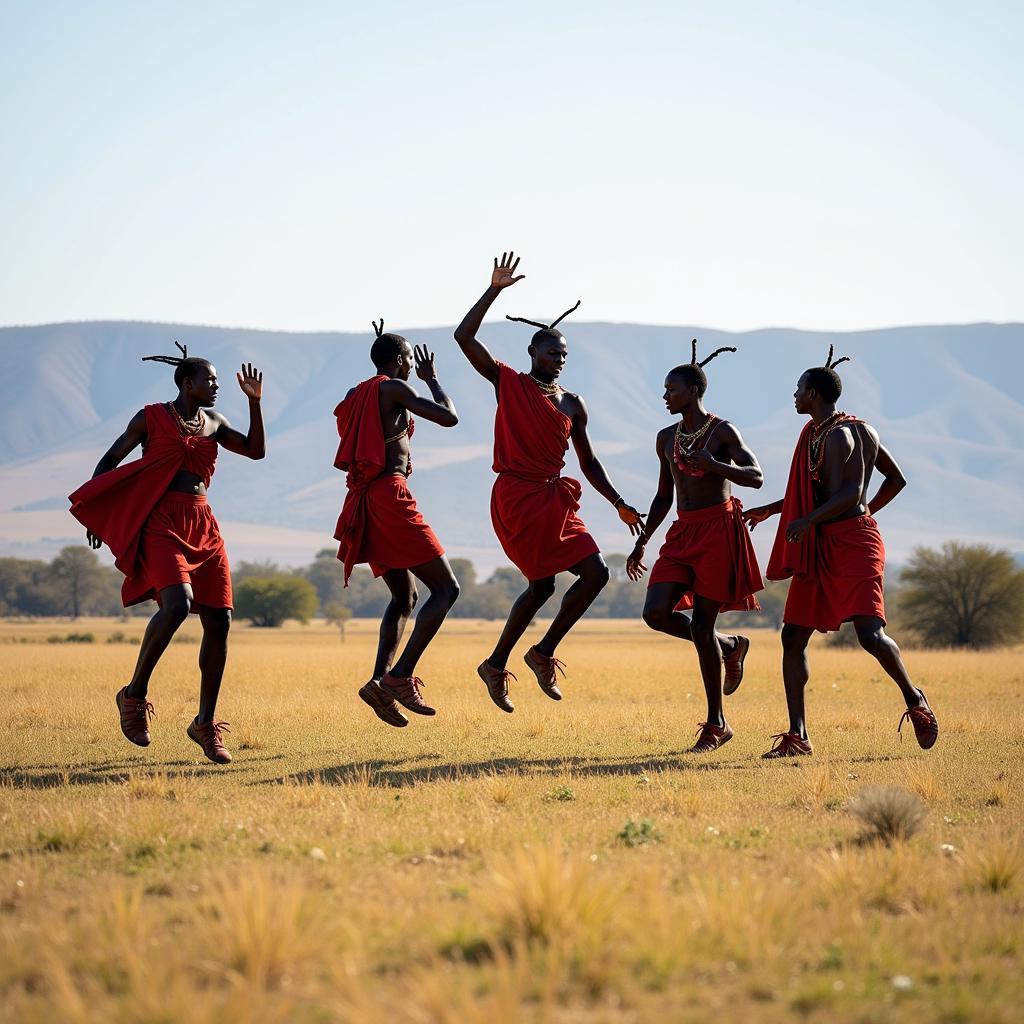Exploring the Vibrant World of African Dance Movements
African Dance Movements are far more than just steps; they are a powerful expression of culture, history, and spirituality woven into the fabric of communities across the continent. From the rhythmic footwork of the Gumboot dance in South Africa to the graceful movements of the Adumu dance of the Maasai people in Kenya, African dance offers a captivating glimpse into the rich diversity of the continent. african dance download offers a great resource for experiencing this diversity.
The Significance of African Dance Movements
African dance isn’t merely entertainment; it’s an integral part of life, deeply embedded in rituals, ceremonies, and everyday activities. It’s a language without words, communicating emotions, stories, and traditions passed down through generations. The movements themselves often mimic the natural world, from the soaring flight of birds to the powerful strides of wild animals, showcasing a profound connection to the environment.
The Diversity of African Dance Movements: A Journey Across the Continent
The sheer variety of African dance movements is astounding. Each region, each tribe, boasts its unique style, reflecting the specific environment, history, and cultural nuances of its people. In West Africa, dances like the Agbadza emphasize vibrant energy and complex rhythms, while East African dances like the Intore showcase powerful leaps and dynamic formations. These dances are often accompanied by live music, with drums, rattles, and other traditional instruments creating a mesmerizing soundscape.
The use of props also adds another layer of richness to African dance movements. From the brightly colored fans used in some West African dances to the sticks and shields used in warrior dances, these props enhance the visual storytelling and symbolic meaning of the movements. african dance steps provides a detailed look at the different steps involved in various African dances.
What are the common characteristics of African dance?
Many African dance styles share common characteristics, such as a focus on polyrhythm, improvisation, and community participation. Polyrhythm, the layering of multiple rhythms simultaneously, creates a complex and captivating soundscape that drives the dance. Improvisation allows dancers to express themselves creatively within the framework of the dance form, while community participation emphasizes the social and unifying nature of dance.
“African dance is not just about steps, it’s about the spirit, the energy, the connection,” says Dr. Ayo Adebanjo, a renowned ethnomusicologist specializing in African dance traditions.
The Role of Music in African Dance Movements
Music is inseparable from African dance. The rhythmic heartbeat of drums, the melodic strains of stringed instruments, and the soulful vocals of singers all intertwine to create the dynamic energy that fuels the dance. The music dictates the pace, the mood, and the very essence of the movement. african dance video hd offers high-quality visuals of these dances, capturing the intricate relationship between music and movement.
 Maasai Warriors Performing the Adumu Dance
Maasai Warriors Performing the Adumu Dance
How does African dance reflect the culture?
African dance is a mirror reflecting the diverse cultures of the continent. It embodies the history, spirituality, and social values of each community. Dances celebrating harvests, honoring ancestors, or marking rites of passage all tell powerful stories through movement. Even everyday activities, such as farming or fishing, are often expressed through stylized movements in African dance.
“African dance is a living archive of cultural knowledge, preserving and transmitting traditions from one generation to the next,” adds Professor Fatima Mbaye, a leading scholar in African cultural studies.
Learning and Appreciating African Dance Movements
Whether you’re a seasoned dancer or simply curious about exploring new forms of movement, African dance offers a rich and rewarding experience. Numerous resources are available for learning about and experiencing African dance, including classes, workshops, and online tutorials. african dance program offers an excellent starting point for anyone interested in delving deeper into this vibrant art form.
The power and beauty of African dance movements lie in their ability to connect us to a rich cultural heritage, to tell stories through the language of the body, and to celebrate the vibrant spirit of Africa.
Conclusion
African dance movements are a testament to the continent’s rich and diverse cultures. They offer a unique window into the history, spirituality, and social fabric of communities across Africa. From the rhythmic footwork to the expressive gestures, African dance is a powerful form of communication and a celebration of life itself. Exploring these movements offers a deeper understanding and appreciation of the beauty and complexity of African culture. african history and religion essay provides further insight into the cultural context of these dances.
FAQ
- What are the different types of African dance?
- How is African dance used in rituals and ceremonies?
- What is the role of music in African dance?
- Where can I learn African dance?
- How can I incorporate African dance movements into my own dance practice?
- What is the significance of costumes in African dance?
- How does African dance reflect the history of the continent?
More questions to explore
- How has African dance influenced other dance forms around the world?
- What are some contemporary interpretations of traditional African dance?
- How can I support African dance artists and organizations?
For further assistance, please contact us at Phone: +255768904061, Email: kaka.mag@gmail.com or visit us at Mbarali DC Mawindi, Kangaga, Tanzania. We have a 24/7 customer service team.
